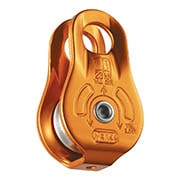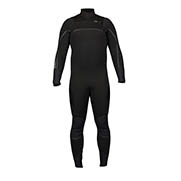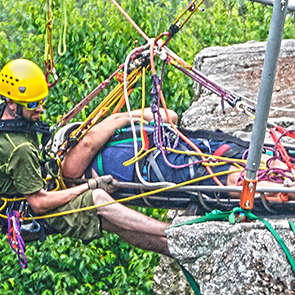Ropes that Rescue
Learn more about Ropes That Rescue
Rope access and rescue workshops from one of the nation's leaders.
These courses are in-depth, hands-on courses, emphasizing training the trainer . RTR seminars are designed to foster serious inquiry into the field of rope rescue and rigging with emphasis on testing and serious scrutiny of procedures in use around the country. Therefore, these seminars are those who have established protocols, and are seeking an active investigation and analysis of the multiple disciplines and techniques sure to be present. Students are encouraged to exchange ideas in a friendly and flexible setting. Many people involved with rescue work today know WHAT they believe, but not WHY they believe it. These courses are for those seeking a keen understanding behind a given methodology or procedure. Much of the classroom time is devoted to just such an inquiry, which we believe arms the student with answers to questions your team will certainly ask. In this context, the instructor will remain open to new ideas but will be conducting the class in a manner which will focus course direction. Specialized equipment, while interesting and sometimes timesaving, will be looked upon as peripheral, whereas basic skills knowledge will remain central to the course's objectives. RTR believes that it is these basic skills, which allow the rescuer to problem-solve and improvise in difficult situations which is key to the development of any rescue instructor. Basic skills are sometimes viewed negatively as too basic or rudimentary. It is perhaps the most advanced and thought provoking course of it's kind anywhere in the world-built upon basics.
We have been told in the past that our programs are too long for most people and "what in the world would take that long to teach, anyway?" The fact of the matter is, even after seven days of this type of training (in some seminars), many of our students feel that there could have been more time to soak up the information and intricate procedures we'll be addressing. It has been our experience that the duration is absolutely essential for grasping the needed practical knowledge of artistic and complex rope rigging. We think you'll agree.
The school also practices a philosophy foreign to many rigging schools in the US by insisting on a constant two-point contact within the 'vertical realm'. Students learn that putting such a philosophy to work within their own agencies is really quite simple and, in the long run, good business.
The instructors of these courses are physically out performing actual demanding rope rescues within a vertical environment which rivals any found in the country.
Students from industry who are new to our training ask us why and how we teach industrial techniques in the wilderness. Our thinking is that if you can operate in the mountains, you can certainly operate in the industrial setting. Mountainous terrain provides some of the harshest rigging problems for the student to overcome. It is no wonder that CONOCO, GE, EXXON, PHELPS DODGE MORENCI, PHELPS DODGE and other leading industrial corporations send there team leaders to these courses.
The teaching of physics-how it relates to the rope rescue field-is perhaps one of the greatest challenges to the practitioner in the 'vertical realm'. To many, the task of learning physical principles related to technical rigging is daunting within the context of a short class. Ropes That Rescue courses have become known within rescue circles for the ability to relay practical physics to the vertical realm-in essence, getting the hay down out of the loft onto the barn floor where the cows can get at it . For too long, rescue instructors have either not relayed the subject in a manner which is understood and applied by the practitioner, or they do not understand the subject themselves. Accurately developed slide shows, and to-the-task lectures on the subject draw the student into a full and working understanding of the physical world around them.




























